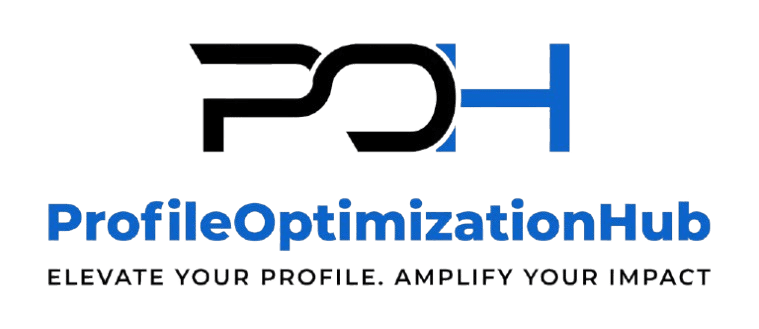Well-Optimized LinkedIn Profile
In the digital age, your LinkedIn profile serves as your professional storefront. It’s where first impressions are formed, opportunities are discovered, and careers are advanced. As we navigate 2025, ensuring your LinkedIn presence is polished and impactful is more crucial than ever.
Step-by-Step: Crafting a Compelling LinkedIn Profile
1. Add a Professional Profile Photo
Your photo is your handshake online. It establishes credibility and increases engagement.
Best practices:
- Use a high-resolution image with a clean, uncluttered background.
- Dress professionally, aligned with your industry standards.
- Maintain a friendly and approachable expression.
Members with a professional headshot receive significantly more views and connection requests.
2. Customize Your Background Image
The banner image behind your profile photo is prime real estate for personal branding.
Suggestions:
- Use a visual that reflects your profession, values, or industry.
- Include branding elements like a slogan or logo, if relevant.
- Keep the design clean, modern, and professional.
A strong background image can quickly communicate your professional identity.
3. Write a Compelling Headline
Your headline is the most visible line on your profile and shows up in searches and connection invites.
How to make it count:
- Include your role, industry, and a clear value proposition.
- Use keywords that reflect your expertise and services.
- Avoid using only your job title—add depth and clarity.
Example:
“Digital Marketing Strategist | Helping SaaS Companies Grow with Data-Driven Campaigns”
4. Craft an Engaging About Section
The About section is your opportunity to tell your story, explain your “why,” and connect on a human level.
What to include:
- A short, engaging overview of your career path.
- Key achievements and areas of expertise.
- Your motivation, values, and professional mission.
- A subtle call to action inviting connections or collaboration.
Write in the first person and aim for clarity, not fluff. Use short paragraphs or bullet points for readability.
5. Detail Your Experience with Measurable Impact
This section should focus on what you’ve accomplished—not just what you were responsible for.
Tips:
- Use bullet points under each job title.
- Begin each point with an action verb (e.g., Managed, Designed, Improved).
- Include metrics where possible (e.g., “Increased revenue by 30% in Q3”).
Highlight both responsibilities and tangible outcomes to stand out.
6. Include Education and Certifications
Showcase your academic background and continuous learning.
What to add:
- Degrees, schools, and dates attended.
- Professional certifications (e.g., PMP, Salesforce, Google Analytics).
- Ongoing courses, bootcamps, or micro-credentials.
This builds trust and demonstrates your commitment to professional development.
7. List Relevant Skills and Get Endorsed
Your skills act as built-in SEO for your LinkedIn profile.
Best practices:
- Add 15–25 skills aligned with your current or desired role.
- Focus on a mix of hard skills (e.g., SQL, UX Design) and soft skills (e.g., Communication, Leadership).
- Ask for endorsements from trusted colleagues.
Keeping your skill section current increases your chances of being found in search results.
8. Collect Meaningful Recommendations
Social proof is one of the most powerful trust builders on your profile.
How to approach this:
- Reach out to past colleagues, supervisors, or clients for short, specific recommendations.
- Guide them with a project or strength you’d like highlighted.
- Approve only those that align with your professional goals.
Aim for 3–5 quality recommendations that reinforce your expertise and character.
9. Feature Key Content and Achievements
The “Featured” section lets you visually showcase work, publications, or accomplishments.
Ideas to include:
- Project portfolios, case studies, or personal blog posts.
- Articles or media mentions.
- Presentations, reports, or awards.
This is ideal for consultants, marketers, creatives, and content creators.
10. Optimize Your LinkedIn URL and Public Profile
Your public LinkedIn profile can appear in search engine results—treat it like a business card.
Tips:
- Customize your URL (e.g., linkedin.com/in/yourfullname).
- Ensure your public profile is visible and up to date.
- Include your profile link on your résumé, website, and email signature.
This increases discoverability both on LinkedIn and in Google search.
LinkedIn Profile SEO Best Practices
- Use industry-specific keywords throughout your profile.
- Repeat your core skill sets in multiple sections (headline, About, Experience).
- Align your language with what hiring managers and clients would search for.
- Avoid buzzwords—focus on clarity, credibility, and results.
The Psychological Advantage: Trust, Relevance, and Authority
A strong LinkedIn profile does more than look good. It helps:
- Build trust with potential employers and clients.
- Signal relevance and leadership in your field.
- Increase your chances of being contacted, referred, or hired.
Your LinkedIn presence should reflect your professional journey, your future ambitions, and the value you bring to others.
Need Help Creating or Optimizing Your LinkedIn Profile?
At Profile Optimization Hub, we help professionals like you turn your LinkedIn profile into a powerful personal brand and opportunity engine.
Our services include:
- Profile Creation – Done-for-you profile writing from scratch
- Profile Optimization – Keyword-rich updates for visibility and impact
- Content Strategy – Plans to help you post and grow your network
- LinkedIn Growth Services – Tools and strategies to build influence and attract leads
We don’t just edit your profile—we elevate it to open doors.
Explore our service plans at:
👉 www.ProfileOptimizationHub.com
